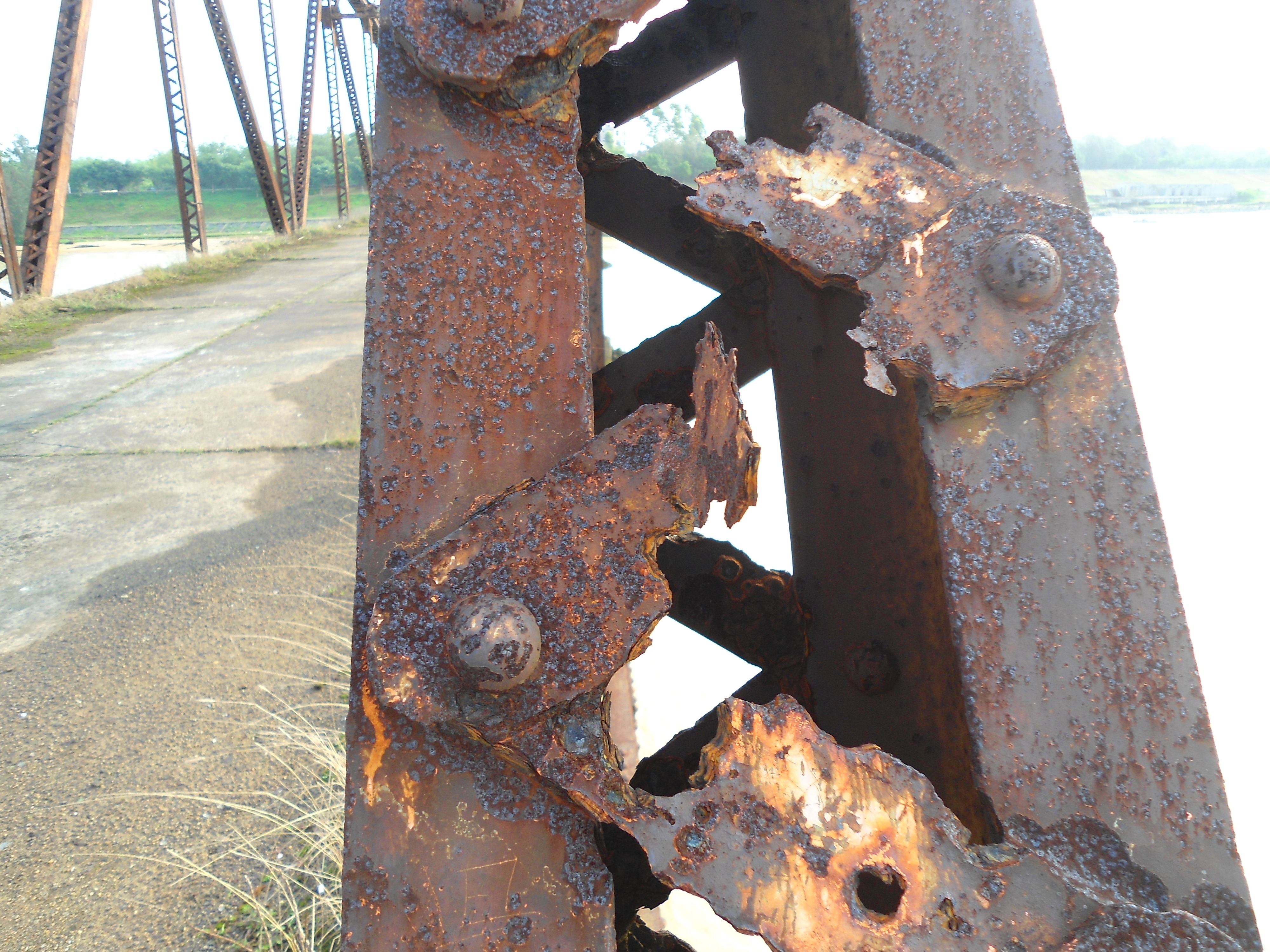Nandu River Iron Bridge on:
[Wikipedia]
[Google]
[Amazon]
The Nandu River Iron Bridge (), also known as the Devil's Iron Bridge, Old Iron Bridge, and originally the Lu Palace Bridge (), is a partially collapsed,

Historical images
Bridges to nowhere Bridges completed in 1942 Road bridges in China Bridges in Hainan Transport in Hainan 1942 establishments in China
steel
Steel is an alloy made up of iron with added carbon to improve its strength and fracture resistance compared to other forms of iron. Many other elements may be present or added. Stainless steels that are corrosion- and oxidation-resistant ty ...
truss bridge
A truss bridge is a bridge whose load-bearing superstructure is composed of a truss, a structure of connected elements, usually forming triangular units. The connected elements (typically straight) may be stressed from tension, compression, or ...
over the Nandu River
The Nandu River () is the longest river in Hainan Province, China. Its tributary is the Xinwu River. The river discharges into the Nandu River estuary at Haikou city, and then into Qiongzhou Strait.
The river is 314 km long, with a discharge ...
, in the north of Hainan
Hainan (, ; ) is the smallest and southernmost province of the People's Republic of China (PRC), consisting of various islands in the South China Sea. , the largest and most populous island in China,The island of Taiwan, which is slightly l ...
Province, China. Opened to traffic in 1942, it was Hainan's first bridge over the Nandu River.
History
The bridge was built by theImperial Japanese Army
The was the official ground-based armed force of the Empire of Japan from 1868 to 1945. It was controlled by the Imperial Japanese Army General Staff Office and the Ministry of the Army, both of which were nominally subordinate to the Emperor o ...
during the Second Sino-Japanese War
The Second Sino-Japanese War (1937–1945) or War of Resistance (Chinese term) was a military conflict that was primarily waged between the Republic of China and the Empire of Japan. The war made up the Chinese theater of the wider Pacific Th ...
to provide access to the land west of the river. On March 26, 1940, approval was given to begin design and construction. The responsibility for the bridge's construction was given to the Japanese company Shimizu Group Contracting, with the steel frames built by Taiwan
Taiwan, officially the Republic of China (ROC), is a country in East Asia, at the junction of the East and South China Seas in the northwestern Pacific Ocean, with the People's Republic of China (PRC) to the northwest, Japan to the nort ...
's Kaohsiung Shipbuilding Production and Installation.
The bridge is long, wide, and has a concrete deck. A cylindrical, concrete guard house remains at the eastern end with horizontal openings. The bridge was designed for a maximum useful lifespan of 20 years, and could carry 20 tons. After Japan's defeat in World War II
World War II or the Second World War, often abbreviated as WWII or WW2, was a world war that lasted from 1939 to 1945. It involved the vast majority of the world's countries—including all of the great powers—forming two opposin ...
, the bridge entered civilian service with a 10-ton load limit and one-way traffic only.
In 1984, the Qiongzhou Bridge
Qiongzhou Bridge (), also known as the Nandu Bridge and the Nandu Ninth Bridge, is a bridge that spans the Nandu River, Hainan Province, China. Opened on May 12, 2003, at a cost of 200 million yuan (US$32.3 million), it serves as the ma ...
was constructed approximately to the north (downstream). As the Nandu River Iron Bridge deteriorated and became dangerous, it was closed to traffic and preserved as a monument.

Safety concerns
In October 2000, flooding caused the collapse of the western part of the bridge, leaving three trusses. These trusses are corroded, with many of the struts heavily pitted or completely rusted through. Concerns over the potential for collapse of the remains have prompted discussions over whether it should be dismantled. Local residents and others wish to preserve it as a historical monument. Today, the bridge attracts such visitors as photographers, tourists, couples using the site as a backdrop for wedding photo shoots, and on September 18 each year, people gather to pay tribute.References
External links
{{Commons category, Nandu River Iron BridgeHistorical images
Bridges to nowhere Bridges completed in 1942 Road bridges in China Bridges in Hainan Transport in Hainan 1942 establishments in China